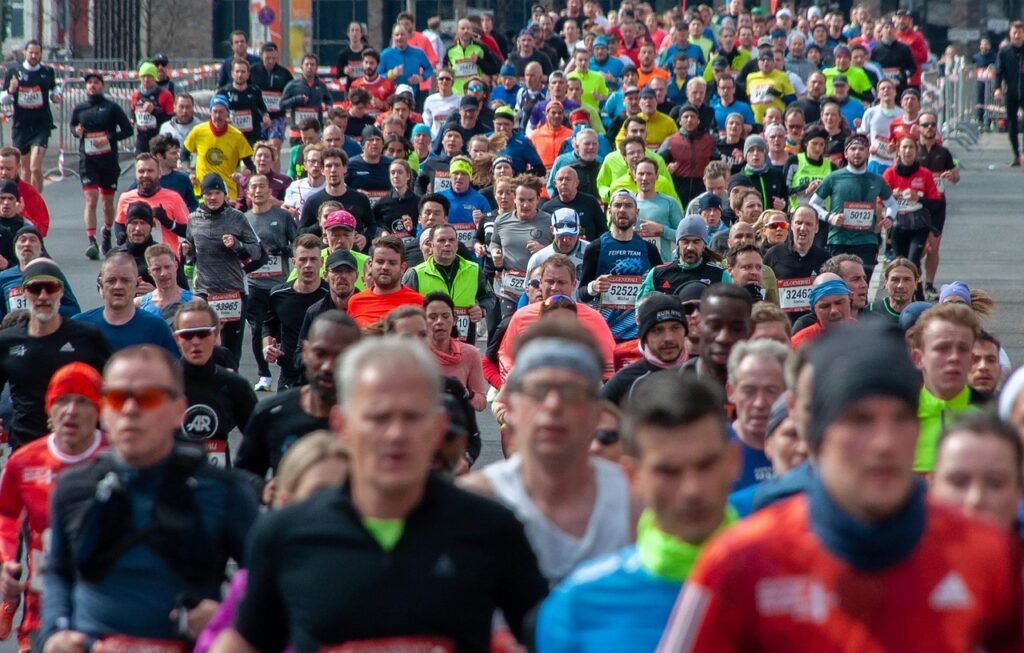The London Marathon

This upcoming weekend, tens of thousands of runners will converge on the UK’s capital to compete in one of the world’s most iconic long-distance races – The London Marathon.
Today, the London Marathon is a cultural and sporting spectacle that attracts global attention. Thousands tune in to watch the live broadcast while countless more line the streets chanting on the runners to the finish line. Its origins date back to 198, the brainchild of Chris Brasher and John Disley, Olympic steeplechase medallists. They wanted to showcase the city of London in an event that would provide a formidable physical challenge for the athletes but also foster a fun environment that would help people feel a profound sense of achievement. Just 7,747 runners took part in that inaugural race, primarily due to safety capping on numbers, which is a modest figure compared to the 53,700 finishers of the race in 2024.
The London Marathon highlights the beating heart of the UK at its best. The route is like a guided tour of the city, starting in Greenwich and finishing on Pall Mall, iconically, in front of Buckingham Palace. Many of the typical tourist attractions of London can be seen along the 26.2-mile route, including Cutty Sark, Tower Bridge, Canary Wharf, The Tower of London, The London Eye, Big Ben and Buckingham Palace. On race day, the whole city turns into a colourful carnival-like celebration with many participants dressing up in costumes and crossing the finish line in the name of charitable causes, not as professional athletes. Almost the entire route is lined with spectators from around the country cheering on the participants, shouting, applauding, ringing cowbells – it’s a wonderful community spirit embodying the British culture that can be felt in the air.
Of course, elite athletes also participate, especially those high-profile names you see at other international competitions or sporting events, such as The Olympics. The professionals start their race earlier than the other participants, running at an astonishing pace, and often race for time or victory as the first across the finish line. In some cases, world records have been smashed at the London Marathon in the women’s, men’s and wheelchair divisions.
One household name for Brits at the London Marathon is Paula Radcliffe. Known as a British running legend and one of the greatest long-distance runners of her generation, she was the face of marathons for the UK in the early 2000s. In 2003, she set the women’s world record at the London Marathon, completing it in 2 hours, 15 minutes and 25 seconds, a record which was only smashed 16 years later in 2019. After her retirement, Radcliffe has gone on to represent long-distance running and continues to work from the sidelines today as a commentator and ambassador for the sport.
The London Marathon takes place in April every year so if you’re visiting the city, it’s definitely worth dropping by to witness the incredible endurance and perseverance of the participants and to feel the togetherness and community spirit from the sidelines. A word of warning, many roads are closed during this event so it’s wise to plan your travel ahead accordingly.
Vocabulary
To converge (vb): To meet at the same point
Sporting (adj): Related to sports
To tune in (phr vb): To watch or listen to a broadcast on TV, radio, or online
To chant (vb): To repeat words or phrases rhythmically
To foster (vb): To encourage
To cap (vb): To limit
Charitable cause (noun phrase): An organisation that helps people in need
To embody (vb): To represent or express an idea
Astonishing (adj): Very impressive
To drop by (phr vb): To visit a place briefly
To witness (vb): To see something happen



Responses